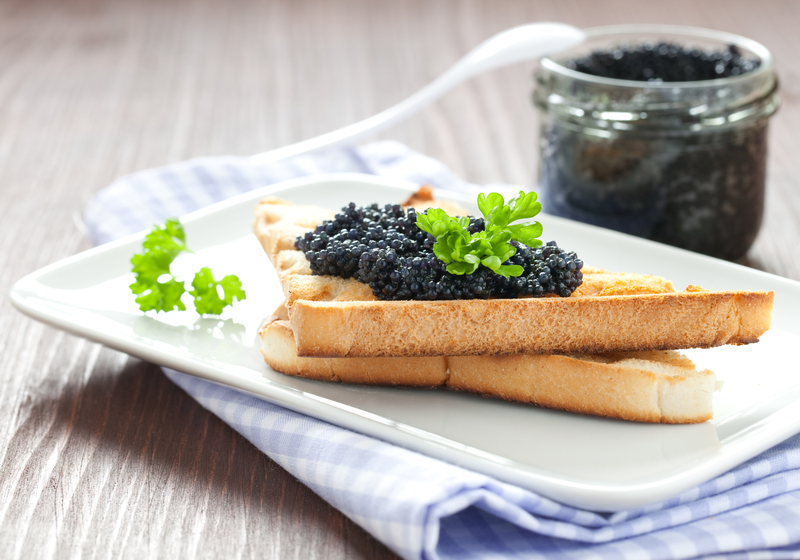 Fish roe, the tiny, nutrient-packed eggs found in various fish species, is a delicacy enjoyed by many around the world.
Fish roe, the tiny, nutrient-packed eggs found in various fish species, is a delicacy enjoyed by many around the world.
While fish roe is celebrated for its unique flavor and nutritional benefits, concerns about the potential presence of parasites have raised questions about its safety.
In this article, we delve into the topic to understand whether fish roe carries parasites and what measures can be taken to ensure its safety for consumption.
Understanding Fish Roe
Fish roe, often referred to as caviar, is a culinary delight that has found its way onto the tables of gourmets and food enthusiasts worldwide.
These tiny, translucent orbs are the eggs of various fish species and are known for their distinct flavors, unique textures, and exceptional nutritional content.
Fish roe, also known as caviar, comes in various types, including sturgeon, salmon, trout, and more.
Rich in omega-3 fatty acids, proteins, and essential vitamins, fish roe is prized for its unique taste and nutritional profile.
Fish roe has a rich history, with its consumption dating back centuries.
Traditionally associated with luxury and decadence, it gained prominence as a delicacy enjoyed by royalty and aristocrats.
Today, fish roe is accessible to a broader audience, with diverse varieties sourced from different regions and fish species.
Fish roe is a versatile ingredient that finds its way into various culinary creations.
From garnishing sushi and sashimi to being a focal point in gourmet dishes, chefs and home cooks alike appreciate its unique texture and flavor.
Additionally, fish roe is often used in spreads, sauces, and as a topping for canapés.
Potential Parasites in Fish Roe
 Despite its nutritional value, fish roe can potentially harbor parasites.
Despite its nutritional value, fish roe can potentially harbor parasites.
Common parasites found in fish include tapeworms, roundworms, and flukes.
These parasites can infect fish during their life cycle and may be present in the roe if proper precautions are not taken during harvesting and processing.
Common Parasites in Fish Roe
Fish roe, like other seafood, can be susceptible to various parasites.
Some of the common parasites found in fish include:
- Tapeworms (Cestodes): These flatworms can attach themselves to the intestinal lining of fish. If not adequately eliminated during processing, tapeworms may persist in fish roe.
- Roundworms (Nematodes): Roundworm infections are prevalent in fish, and if present in the fish’s internal organs, they may be found in the roe.
- Flukes (Trematodes): Flukes are flatworms that can affect the liver and other internal organs of fish. If present in the fish, they may contaminate the roe.
To ensure the safety of fish roe, stringent measures should be taken to mitigate the risk of parasites.
These measures include, quality control, freezing and pasteurization.
While the potential presence of parasites in fish roe is a concern, it can be effectively managed through proper harvesting, processing, and consumer practices.
By necessary precautions, individuals can continue to enjoy the culinary delights of fish roe with confidence in its safety.
Importance of Proper Processing
To minimize the risk of parasites in fish roe, proper processing is essential.
Parasite Elimination
One of the primary reasons for emphasizing proper processing is the need to eliminate or minimize the presence of parasites in fish roe.
Parasites such as tapeworms, roundworms, and flukes can pose health risks if ingested.
Rigorous processing methods, including freezing and pasteurization, play a crucial role in neutralizing these parasites, ensuring the safety of the roe for consumption.
Quality Control
Proper processing is synonymous with effective quality control measures.
From the moment the fish is caught to the final packaging of the roe, every step must adhere to strict standards.
This includes inspecting the fish for any signs of disease, ensuring hygienic conditions during processing, and conducting thorough quality checks to guarantee that only the highest-quality roe reaches the market.
Preservation of Flavor and Texture
In addition to safety considerations, proper processing is essential for preserving the unique flavor and texture of fish roe.
The delicate nature of roe makes it susceptible to changes in taste and texture if not handled with care.
Techniques such as gentle curing and proper storage help maintain the integrity of the roe, allowing consumers to experience the full spectrum of flavors that make fish roe a sought-after culinary delight.
Compliance with Regulations
Stringent processing practices are often mandated by health and safety regulations imposed by local and international authorities.
Adhering to these regulations is not only a legal requirement but also a commitment to consumer welfare.
Compliance ensures that fish roe meets established standards, reinforcing trust in the product and the industry.
Consumer Confidence
Ultimately, proper processing instills confidence in consumers.
When individuals know that the fish roe they are purchasing has undergone meticulous processing, adhering to the highest standards of safety and quality, they can consume it with peace of mind.
This confidence is crucial in sustaining the demand for fish roe and supporting the industry.
The importance of proper processing in the production of fish roe goes beyond mere technicalities.
It encompasses health, quality, sustainability, and cultural significance, making it a cornerstone in the journey from the ocean to the plate.
As consumers continue to appreciate the unique qualities of fish roe, the commitment to rigorous processing practices remains pivotal in sustaining its allure and ensuring its place in the world of gastronomy.



 Ensuring the safe consumption of fish roe is crucial, and consumers can take specific precautions for their well-being.
Ensuring the safe consumption of fish roe is crucial, and consumers can take specific precautions for their well-being.